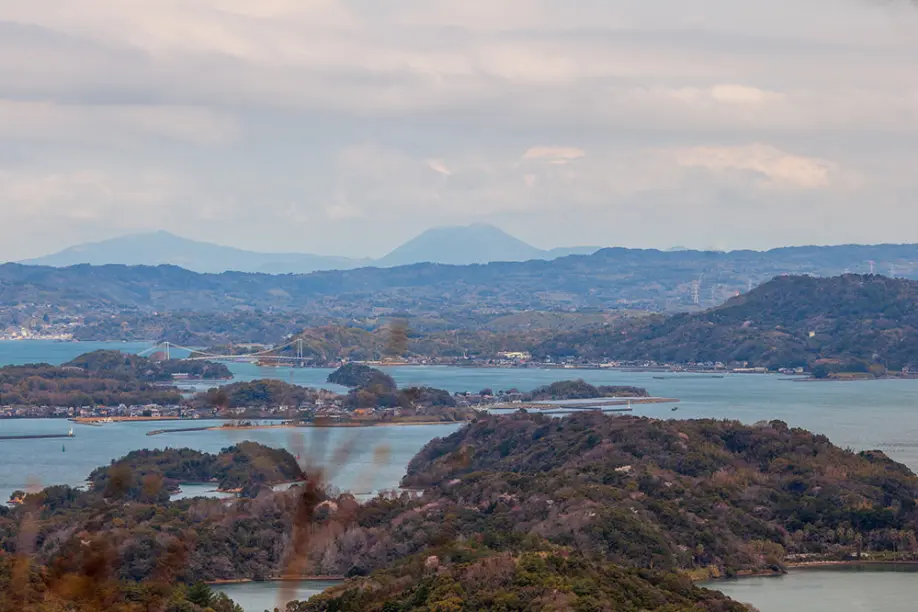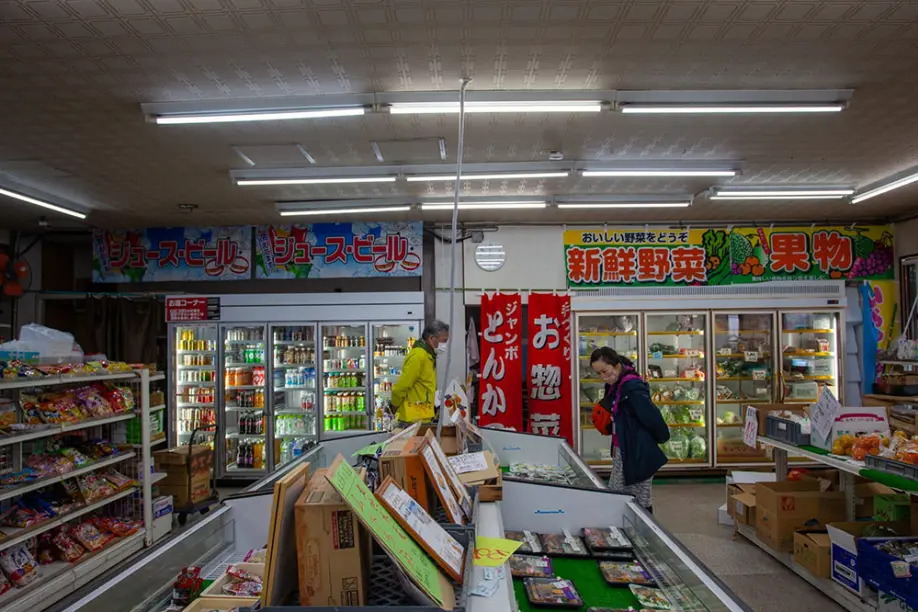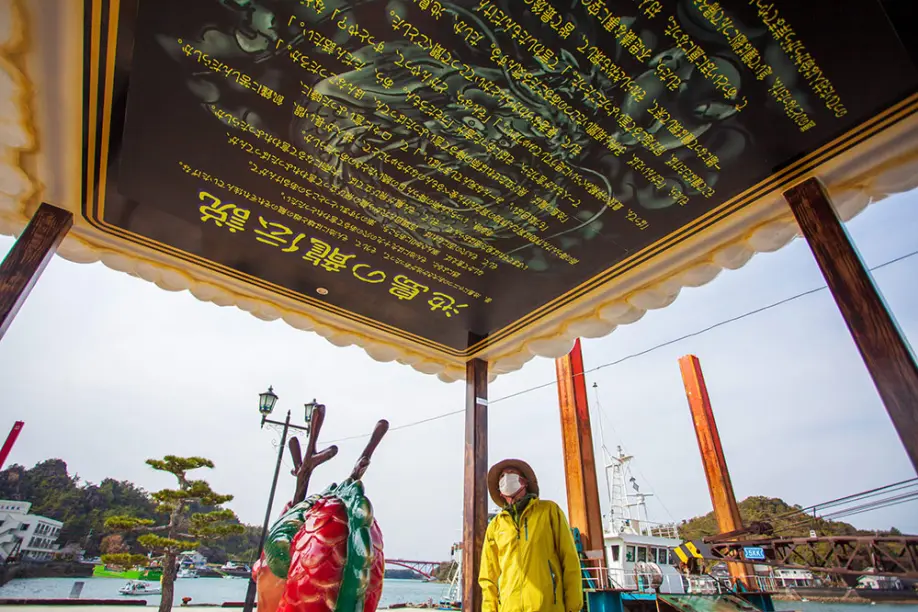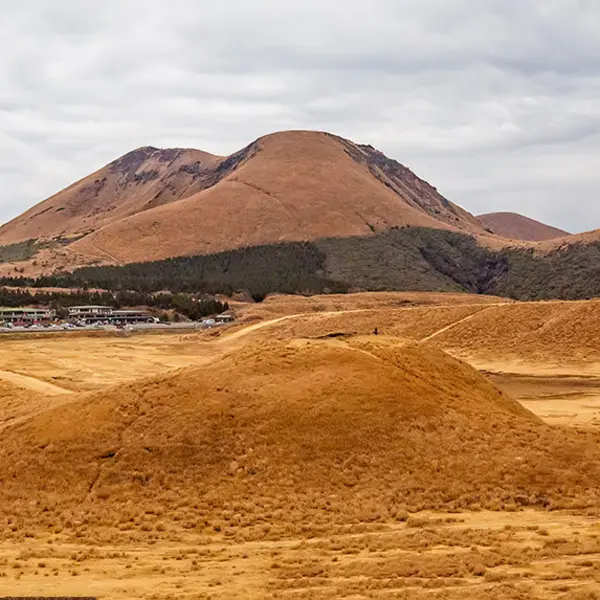
Hiking Matsushima Olle
Course to Explore the Nature and Intriguing History of Amakusa Island
Whenever I plan a trip in Japan, I face a dilemma – should I explore one of the country's gorgeous hiking trails and immerse myself in nature without the touch of civilization for days or pick a destination rich in culture and full of opportunities for social interaction? During my recent visit to Amakusa Island located off the coast of Kumamoto Prefecture in Kyushu, I finally found an answer that combines both: Olle trekking courses.
The concept of “ Olle”, which originated in Jeju Island of South Korea and means “a small alley leading home” in Korean, involves trekking courses encompassing a diverse set of experiences and sceneries. The idea aims to encourage hikers to enjoy the trails at a leisurely pace, create opportunities for interactions with the locals, and stimulate all five senses. In other words, as the saying goes, it is the journey that counts, not the destination.
Amakusa-Matsushima Olle Course in Ueshima, one of the three main islands of Amakusa, was my first experience hiking an Olle trail, the numbers of which are limited. Each trail must be evaluated and licensed by the Jeju Olle Foundation, which also assists the local authorities with the trail discoveries. Olle courses are usually longer than 10-kilometers with paved sections limited to a maximum 10% of the trail length. Since Kyushu’s certification in 2012 as the first Olle host outside of South Korea, there are currently 21 Olle trekking courses in Kyushu, 3 of which are located in Amakusa.
I was already relatively well versed in the history of Amakusa, which was one of the main ports of early contact of Japan with the Western culture, and eager to discover more. However, the mesmerizing landscape scenery surrounding the archipelago, consisting of 120 islands making up Amakusa and which are part of Unzen-Amakusa National Park, was a very welcome surprise.
These islands, once isolated from the mainland and seen as a perfect place to hide from the authorities, have been the chosen home of Hidden Christians of Japan since the Edo Period.
Amakusa was also one of the battlegrounds during the Shimabara-Amakusa Rebellion in 1637-1638, commonly referred to as the largest civil conflict in the history of Japan. The rebellion that started in neighboring Shimabara against the oppressive policies of the ruling clan was soon joined by the villagers of Amakusa - who were heavily burdened with increased tax rates - and the Hidden Christians who were subject to persecution due to the unforgiving policies banning Christianity. The leader of the uprising was an unlikely 16-year-old hero, Amakusa Shiro, a native of Amakusa.
After a very picturesque landing at Amakusa Airport surrounded by endless greenery, I met Yoshinaga-san, a local guide, and Moriuchi-san, both natives of Amakusa, to join me for the Amakusa-Matsushima Course.

The course, which runs for 11-kilometers and takes around four to five hours on average, introduces the hikers to a diverse landscape including rice paddies, mountain panoramas, lush forests, rural villages, and last but not the least, cultural sites.

The trail is very well marked with the trademark blue and red signs, resembling the head of a horse, specifically designed for Olle courses. If you follow the blue signs, you will move in the direction of your target destination whereas the red signs will take you back to your starting point.

We started our hike by praying to Chiju Kannon Buddha, frequently visited by mothers looking for a cure to stop the drooling of their babies, but prayers for a safe and pleasant hike were also welcome.
The route, which first took us through a small village, soon led to a scenery dominated by giant rock formations. I soon found out that the giant rock formations were a common site in Amakusa and some of these rocks were affectionately integrated into the local culture. Dago Ishi, believed to be formed 50 million years ago and which has miraculously not collapsed since, is where the students pray to be as steadfast as the still-standing rock and not fail their exams.

Despite the cloudy morning weather, colorful flowers lining the route, including the Sakura blooming early in the mild climate of Kyushu, warmed up the scenery.
The trail followed a river and soon opened to a vast rice paddy. Noticing my excitement about the rural scenery and admiration of the hard-working villager preparing his land for the early harvesting, Yoshinaga-san noted that he also used to help out with the land preparation and rice harvesting since he was in elementary school.

While the vast rice paddy - 60,000 square meters - appeared very fertile, the insufficiency of cultivable land was one of the main reasons that led Amakusa locals to join the Amakusa-Shimabara Rebellion during the Edo Period. The land was not fertile enough to meet the increasing demand for rice - which was then used to pay taxes - due to the backbreaking taxation policies of the ruling clan. The locals were simultaneously trying to avoid famine and grew increasingly frustrated, joining the revolt with the hopes of regaining their livelihood.

As we left the rice paddies behind, the trail led to a mountain path climbing up to Mount Sengan. It was already past noon and we were getting hungry. We decided to pick up a lunch box from the local bento store and drive to the entrance of the short mountain trail leading to the observatory on top of Mount Sengan.
As the weather started to clear up, we approached the observatory through a beautiful forest route. Despite the delicious smell of the freshly cooked potato croquettes in my lunch box, the scenery that surrounded me felt exceedingly more urgent.

The clouds dissipated and the smaller islands, mountain peaks, and the picturesque bridges, all lined next to each other, became fully visible. These islands are easily accessible today by way of the five bridges of Amakusa connecting it to mainland Kyushu. But they were once so isolated that the Hidden Christians took refuge among them with the hopes of avoiding persecution. I tried to picture the scene of centuries ago when there were no bridges and sense the feeling of isolation.
Yoshinaga-san, silently watching me soak up the scenery in an almost child-like excitement, soon revealed that we were at the location where Amakusa Shiro, the leader of the Shimabara Rebellion, held a banquet with the rebels to celebrate victory. Unfortunately, it turned out to be an early celebration when the armies of the local domains, supported by the Tokugawa army, then the leading clan of Japan, suppressed the revolt on 15 April 1638.
This made me think of a dialogue from John Dougill`s book - “in Search of Japan's Hidden Christians” - where the author questioned and asked an Amakusa local whether Amakusa Shiro was a true leader. His response was free of any sign of hesitation - “We think he was a leader because people wanted to follow him…They knew they could not win but they believed in him…he could make people believe in what he said.” I could sense the same passionate response in Yoshinaga-san`s eyes.

The trail, which started with rural villages, rice paddies, and mountain panoramas, now led to a dense forest. The panoramic ocean scenery was replaced with moss-covered rocks and lush trees creating a jungle-like atmosphere.

We soon approached a mossy megalith that collapsed due to erosion. I watched Yoshinaga-san suddenly disappear into the very narrow passage under the rock. Moriuchi-san, noticing my surprise, waved at me to first make a wish and then follow the path of Yoshinaga-san. As is often the case, I struggled to pick just one wish but soon found myself negotiating the narrow passage opening into another lush section of the forest.

As we rejoined the view of the sea, we were approaching the end of the trail. Before heading to Ryu-no-Ashiyu, the foot bath shaped like a dragon, we stopped for a coffee at the small cafe/gift shop next to Matsushima Viewpoint. It is always heartwarming to be enveloped in the lively atmosphere created by locals who chat excitedly with each other and are always happy and eager to welcome a visitor.
As we reached the trail end, it was time to say goodbye to my two local companions. It was not only the wonderful scenery or the intriguing stories linked to the history of Amakusa that made this hike a unique one. Witnessing the enthusiasm of Yoshinaga-san and Moriuchi-san about their native land and experiencing their willingness to share its many wonders with the visitors made all the difference.
Head of horse pointing the trekking direction

Family Shop Ueno

Amakusa-Matsushima Olle Course

Ryu-no-Ashiyu


Burcu Basar
Burcu Basar, originally from Istanbul, Turkey, is doing her PhD in Japan in an area that miraculously combines her profession—law—and her passion—national parks. She lives in Tokyo but can often be found in various national parks all over Japan.
 Hiking Matsushima Olle: Course to Explore the Nature and Intriguing History of Amakusa Island
Hiking Matsushima Olle: Course to Explore the Nature and Intriguing History of Amakusa Island Mount Aso: Nature at Its Most Majestic
Mount Aso: Nature at Its Most Majestic Yakushima: Trekking through Japan’s thousands-year-old forest
Yakushima: Trekking through Japan’s thousands-year-old forest Kikuchi District - The Great Outdoors of Kyushu
Kikuchi District - The Great Outdoors of Kyushu To Hell and Back: Walk Through the Steamy Hot Springs of Unzen
To Hell and Back: Walk Through the Steamy Hot Springs of Unzen Hiking in Ebino Highlands: Explore the Crater Lakes in the Company of Friendly Deer
Hiking in Ebino Highlands: Explore the Crater Lakes in the Company of Friendly Deer Kyushu Olle: An Autumn Hike on the Okubungo Course
Kyushu Olle: An Autumn Hike on the Okubungo Course Driving Around Fukue Island: Hidden Churches and Stunning Beaches
Driving Around Fukue Island: Hidden Churches and Stunning Beaches Hiking Trails at Aso Kusasenri
Hiking Trails at Aso Kusasenri Cape Toi in Miyazaki: A Festival of Colors
Cape Toi in Miyazaki: A Festival of Colors




